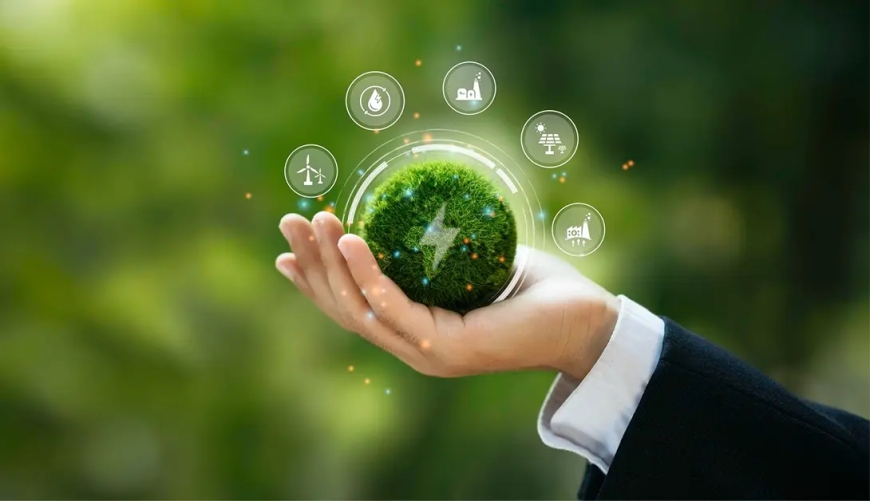Turning Waste Into Value: Circular Economy Innovations
Circular economy innovations are changing how companies turn waste into profit, creating sustainable projects that make business sense beyond just environmental PR.

Waste Stopped Being Garbage
Companies finally figured out waste is money thrown away. Not in some vague environmental sense - actual dollars leaving the business disguised as trash. Circular economy innovations flip that by treating waste as raw material for something else.
The old model was linear - take resources, make products, dump waste. That's expensive and stupid when you actually calculate costs. Buying virgin materials, paying for waste disposal, dealing with environmental regulations - it all adds up. Smart companies realized keeping materials in use longer saves money while helping the planet.
This isn't tree-hugging idealism anymore. It's profitable business strategy. Patagonia repairs gear instead of just selling new stuff - and people pay for repairs. IKEA started buying back old furniture to resell - created a new revenue stream from "waste." These circular economy innovations make financial sense first, environmental sense as a bonus.

The shift happened because regulations got stricter and customers started caring. Companies with better waste into value strategies have lower costs and better brand perception. That's a competitive advantage, not charity.
What Actually Works Right Now
Forget theoretical future tech. Here's circular economy innovations companies are using today to turn waste into value profitably.
Industrial symbiosis is companies swapping waste. One factory's trash becomes another's raw material. Brewery waste becomes animal feed. Manufacturing heat warms nearby buildings. Seems obvious but most companies never looked beyond their own walls before. Now industrial parks designed around this save everyone money.
Product-as-service models keep materials in circulation. Instead of selling washing machines, sell washing cycles. You own the machine, maintain it, upgrade components, recycle it eventually. Customer gets working laundry without owning a depreciating appliance. You keep valuable materials in your system instead of landfills.

Upcycling at scale turns waste into premium products. Adidas makes shoes from ocean plastic. Freitag makes bags from old truck tarps. These aren't cheap eco-products - they're premium items people want because they're cool AND sustainable. That's waste into value done right.
Chemical recycling breaks materials down to molecular level for reuse. Regular recycling degrades plastic quality each cycle. Chemical recycling resets it to virgin quality. Still expensive but scaling fast. Companies investing now will dominate when regulations ban virgin plastics.
Sustainable Projects That Actually Pencil Out
Most sustainable projects fail because they cost more than they save. These circular economy innovations actually work financially.
Renewcell turns old clothes into new fabric. Fashion's a waste disaster - mountains of discarded clothes nobody wants. Renewcell's process makes fiber good enough for premium brands.

H&M and Levi's are using it. Basically, it is about a simple circular economy model that scaled across 17 countries.
What makes sustainable projects succeed:
- Clear cost savings or new revenue
- Better product quality, not worse
- Scalable without subsidies
- Solving actual business problems
- Customer demand beyond just "eco-friendly"
Why This Finally Took Off
Circular economy innovations struggled for years because linear was cheaper. That changed. Virgin material costs jumped. Disposal costs rose. Regulations multiplied. Suddenly keeping stuff in circulation became the economical choice.
ESG investing pushed it too. Funds managing trillions now screen for sustainability. Companies with better waste into value strategies get cheaper capital. That's real money, not feel-good points. CFOs pay attention when financing costs drop.
Consumer pressure helps but honestly matters less than people think. Most consumers say they care about sustainability then buy the cheapest option. What actually drives circular economy innovations is businesses realizing it's profitable and investors/regulators requiring it.
Getting Started Without Huge Investment
Small companies can't build chemical recycling plants. But circular economy thinking works at any scale for turning waste into value.
Start with waste audits. What are you throwing away that costs money twice - buying it, then disposing it? Can any of it be reused, sold, or swapped with another company? Most businesses find easy wins here.
Redesign for durability and repair. Making products last longer keeps materials in use, builds customer loyalty, creates service revenue. Patagonia proves this works even in fashion, supposedly driven by trends and newness.
Partner with waste streams. Can your waste become someone's input? Can someone's waste work for you? Industrial symbiosis doesn't need fancy infrastructure, just companies talking to each other about what they're throwing away.
Offer take-back programs. Even if you can't recycle everything yourself, taking products back builds relationships and gives you feedstock for sustainable projects. Plus customers love brands that close the loop.
What's Your Reaction?
 Like
0
Like
0
 Dislike
0
Dislike
0
 Love
0
Love
0
 Funny
0
Funny
0
 Angry
0
Angry
0
 Sad
0
Sad
0
 Wow
0
Wow
0























































































































































































